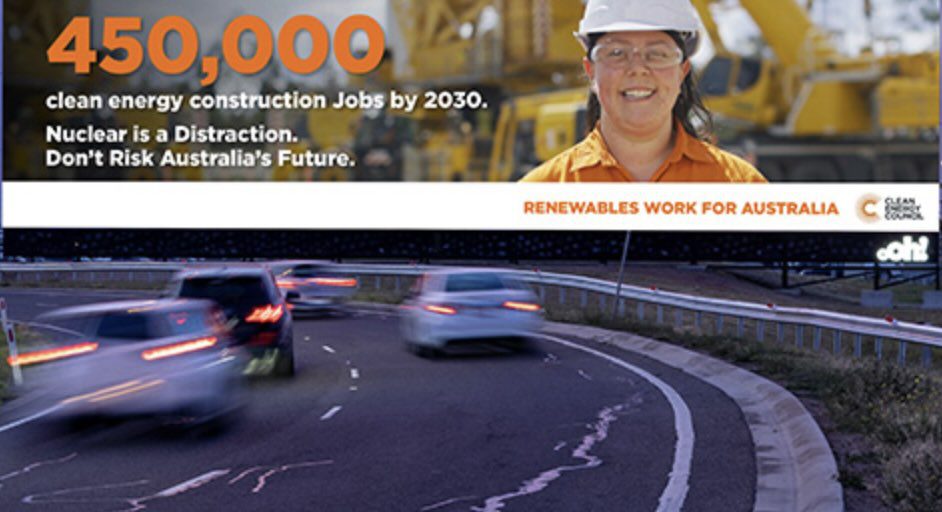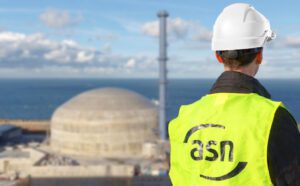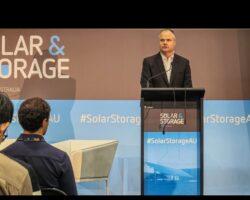The Clean Energy Council, one of the industry’s peak bodies, has launched a national advertising campaign – in airports, billboards and even lift lobbies – targeting nuclear advocates and seeking to boost public understanding of the renewables industry.
The CEC says there are two key messages from the campaign: “Nuclear is a distraction”, and “Don’t risk Australia’s Future.”
The campaign is already appearing in more than 2,200 locations in city building lifts and lobbies in Sydney and Melbourne, and on animated digital billboards in airport lounges at Canberra, Sydney and Melbourne Airport.
Within the next fortnight, it is expected that billboards will appear in prime locations in CBDs on the east coast.
The campaign by the CEC follows an intense push by the federal Coalition, amplified and often widely supported in mainstream media, to bring a halt to the rollout of large scale renewables, and keep coal fired power stations open until some sort of nuclear option becomes available.
The renewables industry has till now played down talk of nuclear, largely because no one in the industry – from the biggest utilities to the biggest energy consumers – are the slightest bit interested in the technology, because of its costs.
But the campaign is a recognition that the efforts of the Coalition, supported by well funded “think tanks” that have targeted key institutions such as the CSIRO and AEMO, and a misleading social media campaign are starting to gain traction.

Energy experts, including the former chief scientist and nuclear technology supporter Alan Finkel, say that pausing the closure of coal fired power stations and waiting for nuclear to be built in Australia would have the effect of delaying climate action for two decades.
“The reality is there is no substitute for solar and wind power this decade and next, supported by batteries, transmission lines and peaking gas generation,” Finkel writes in The Guardian on Friday.
“Any call to go directly from coal to nuclear is effectively a call to delay decarbonisation of our electricity system by 20 years.”
Finkel repeated comments made last year on RenewEconomy’s Energy Insiders podcast that nuclear could not realistically be built in Australia until the mid 2040s. Large scale nuclear was likely incompatible with a large share of renewables, and small modular reactors have not been built, or even licensed, in OECD countries.
It is becoming increasingly clear that the nuclear push is designed to bring the rollout of renewables to a halt – not just temporarily, but for good.
The Coalition’s chief advisors admit that nuclear, which apart from its extremely high costs, is inflexible and has poor ramping rates, to respond in changes of demand or supply, is effectively not comparable with a grid supplied larger by wind and solar, which needs fast and flexible capacity to support it.
In effect, because the grid is morphing from a system built around centralised “baseload” principles to a more distributed system based around wind, solar and flexibility, the two technologies – nuclear and renewables – are effectively incompatible.
Hence the urgency for the Coalition to act, because Australia’s current target is to reach 82 per cent renewables by 2030, supported by the expanded Capacity Investment Scheme and various state initiatives. South Australia is aiming to reach “net” 100 per cent renewables by 2030, and already has a share of 75 per cent wind and solar.
However, it is now clear that the clean energy industry now fears the nuclear push will create more uncertainty for a sector already battling with bottlenecks and roadblocks in planning decisions, network capacity, connection delays, social licence, and market regulations that are struggling to keep up with the transition.










